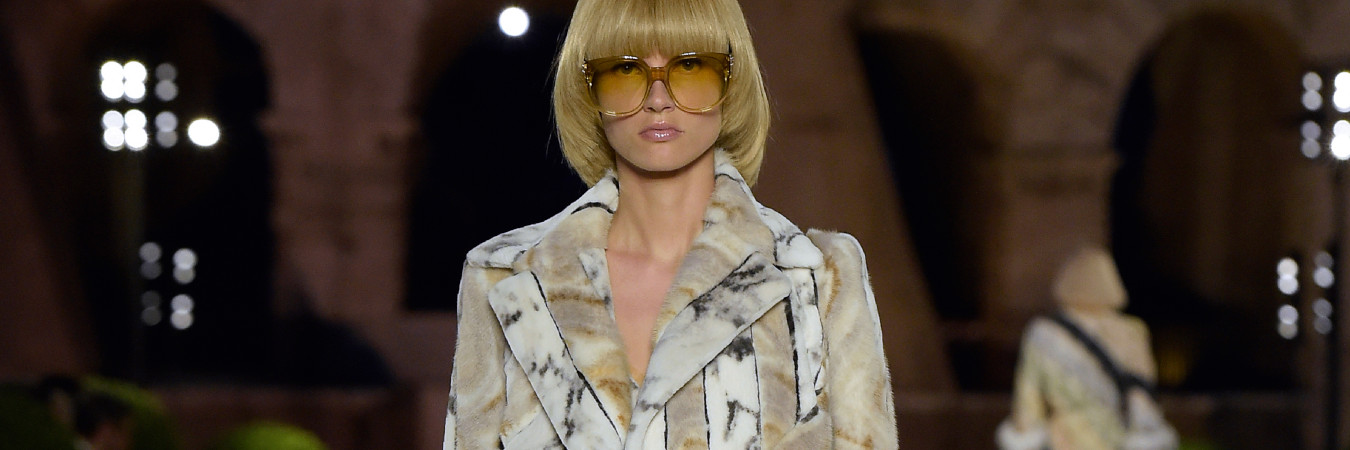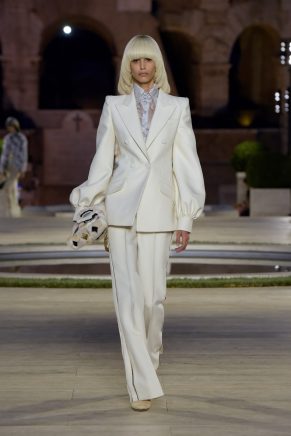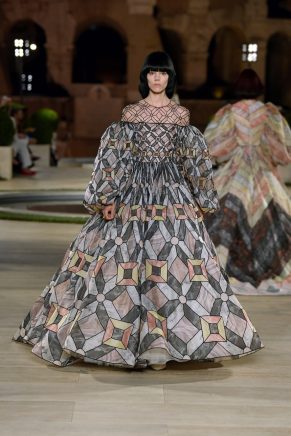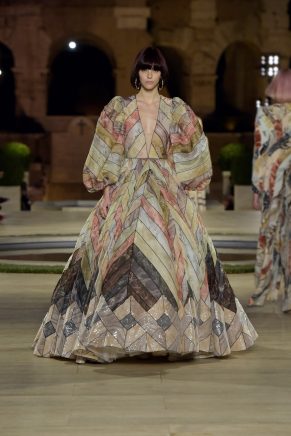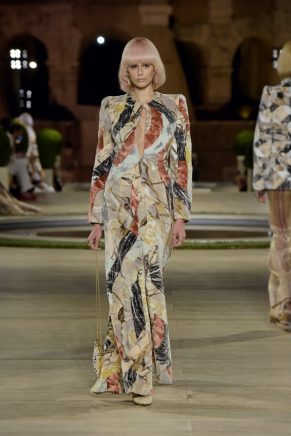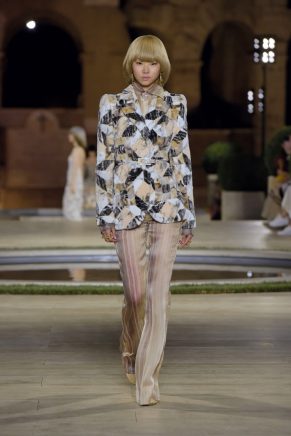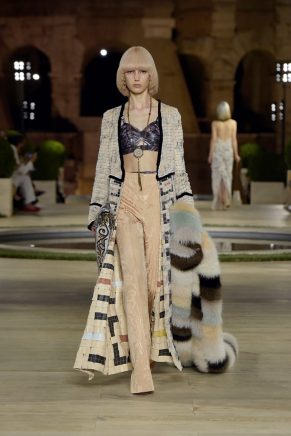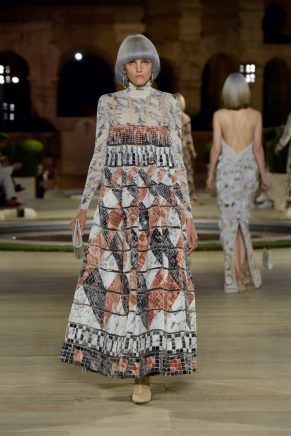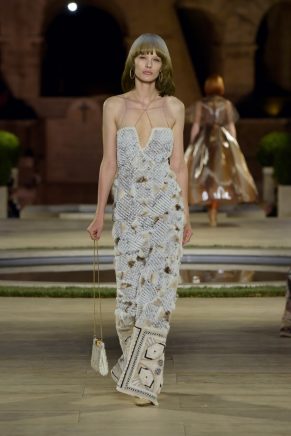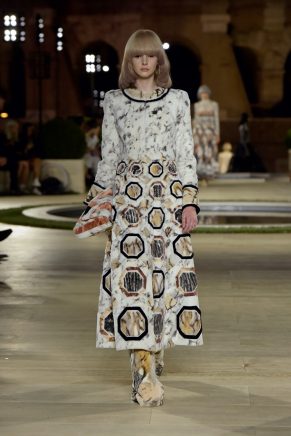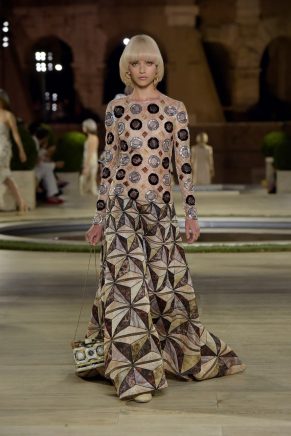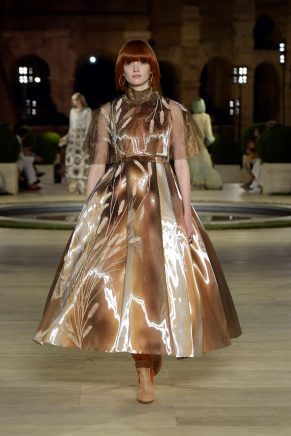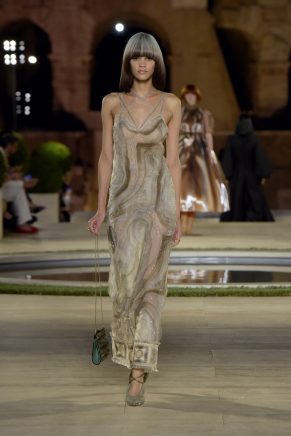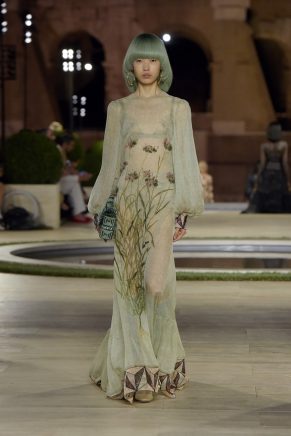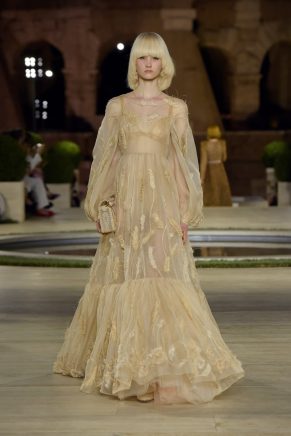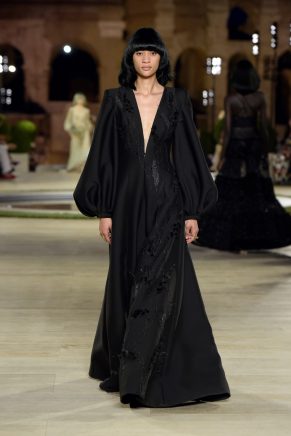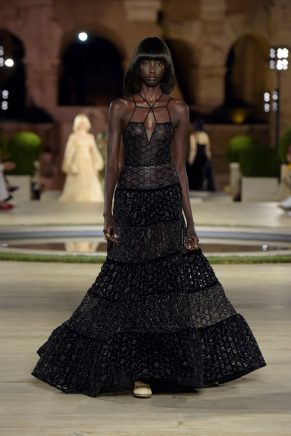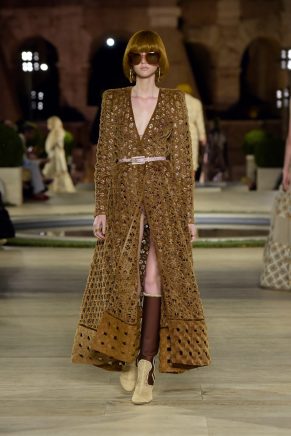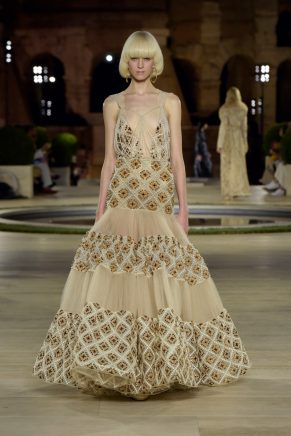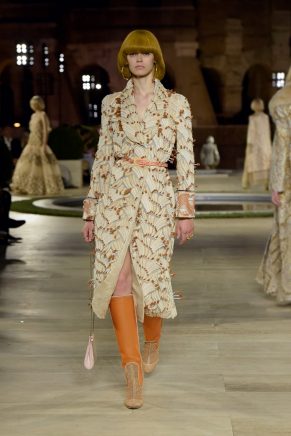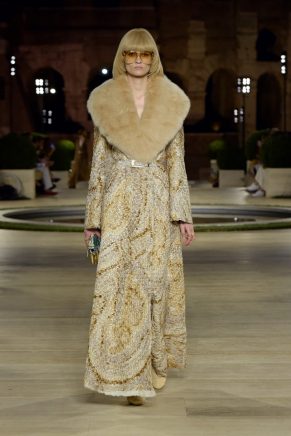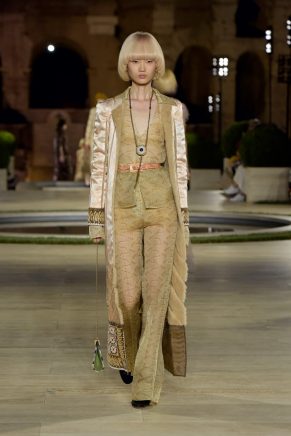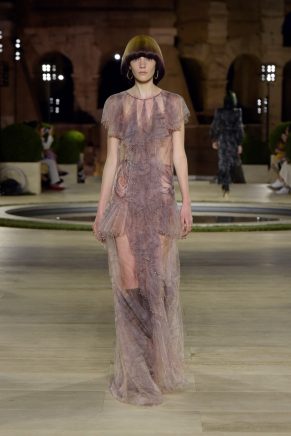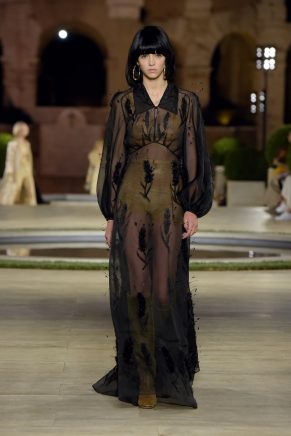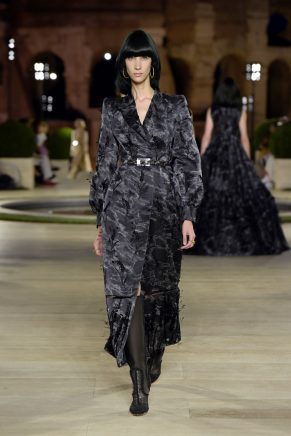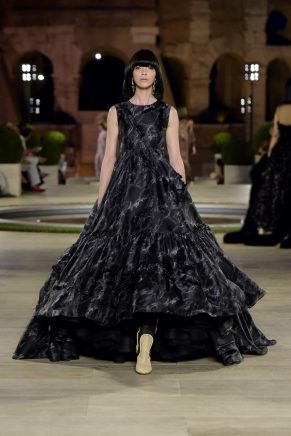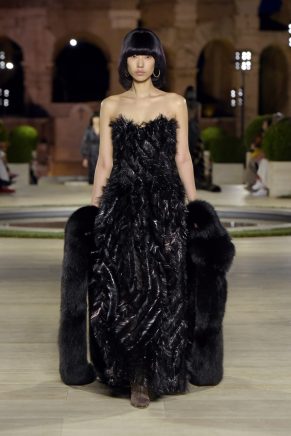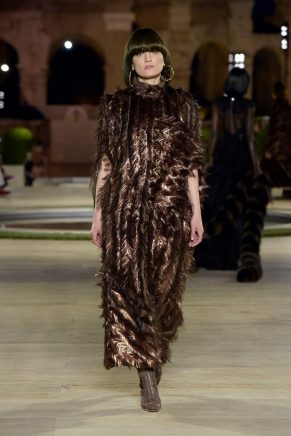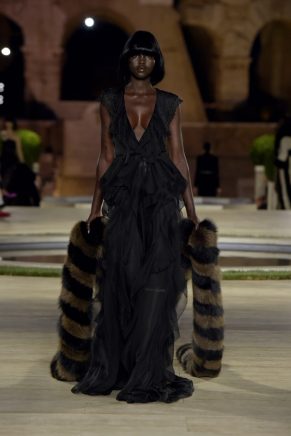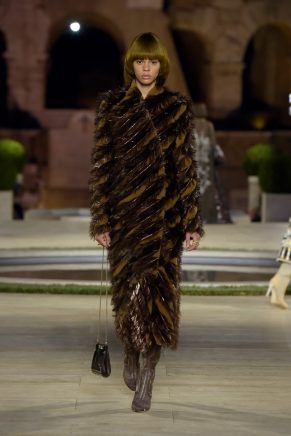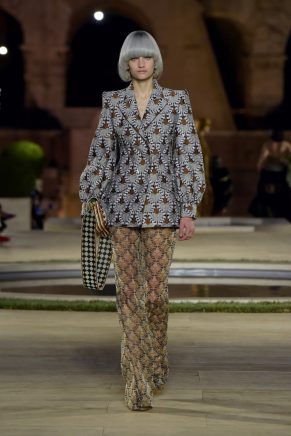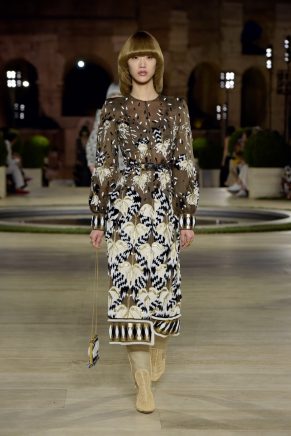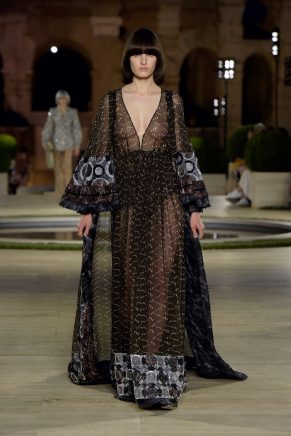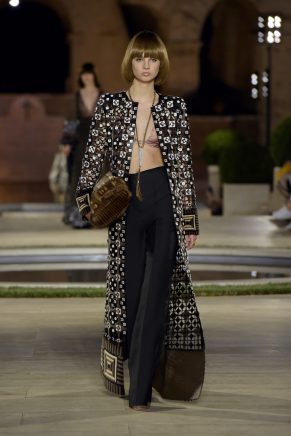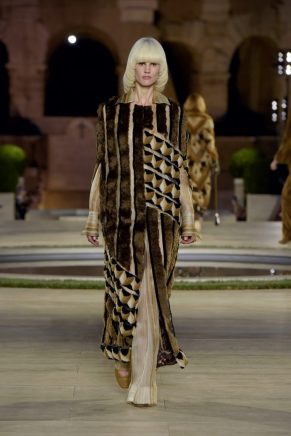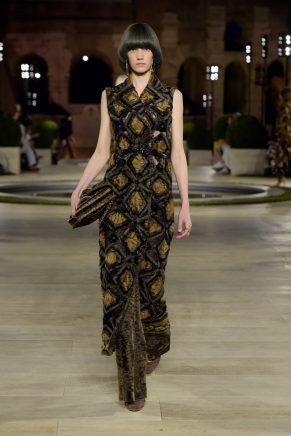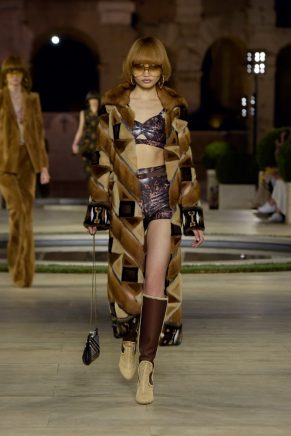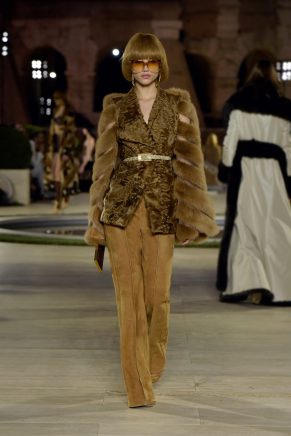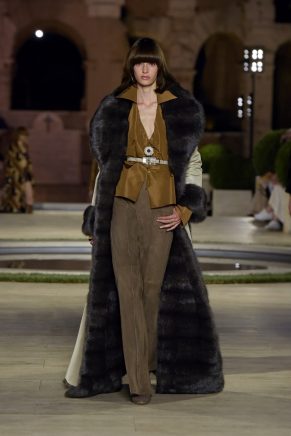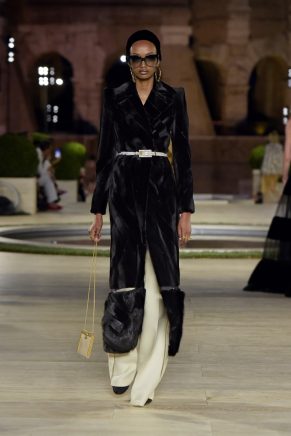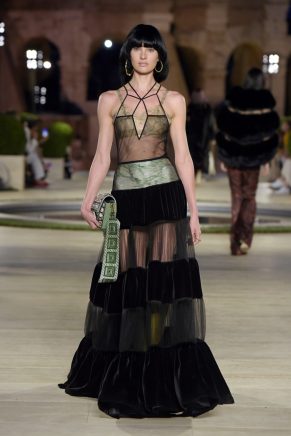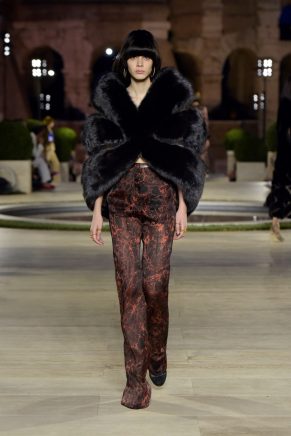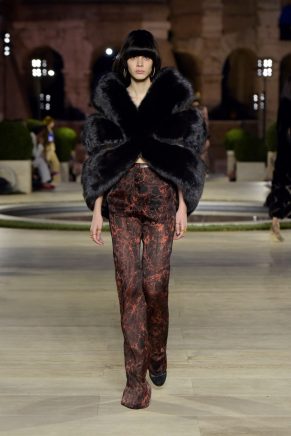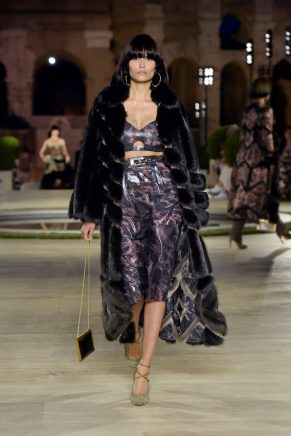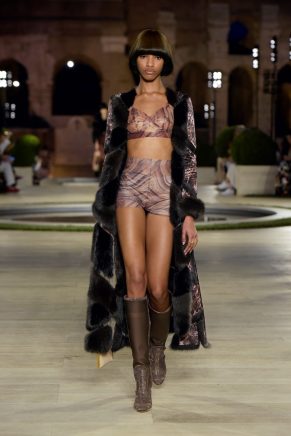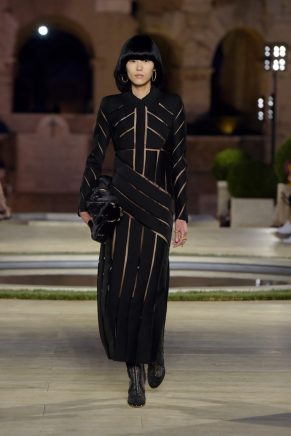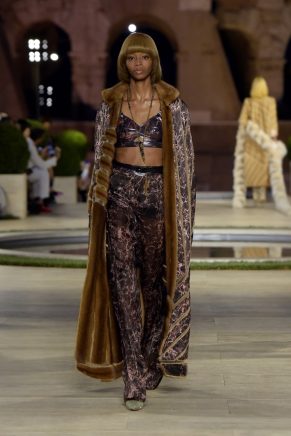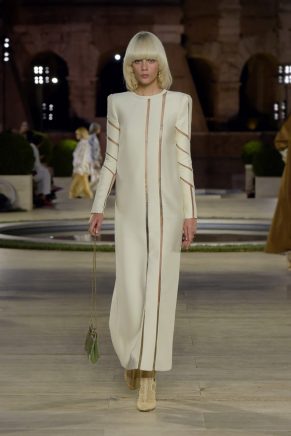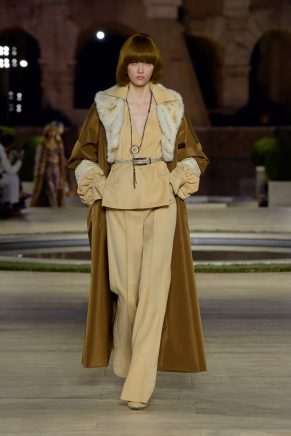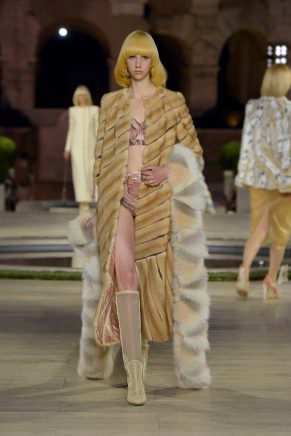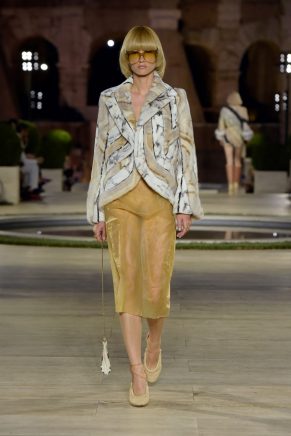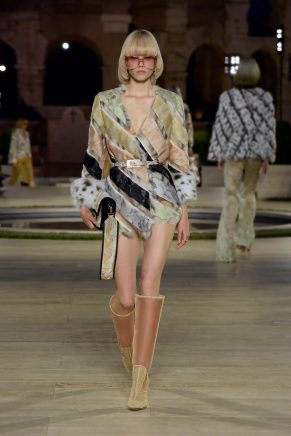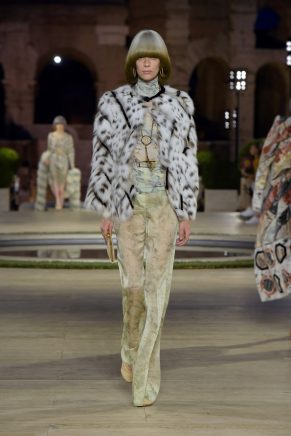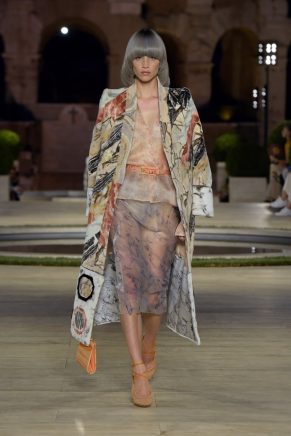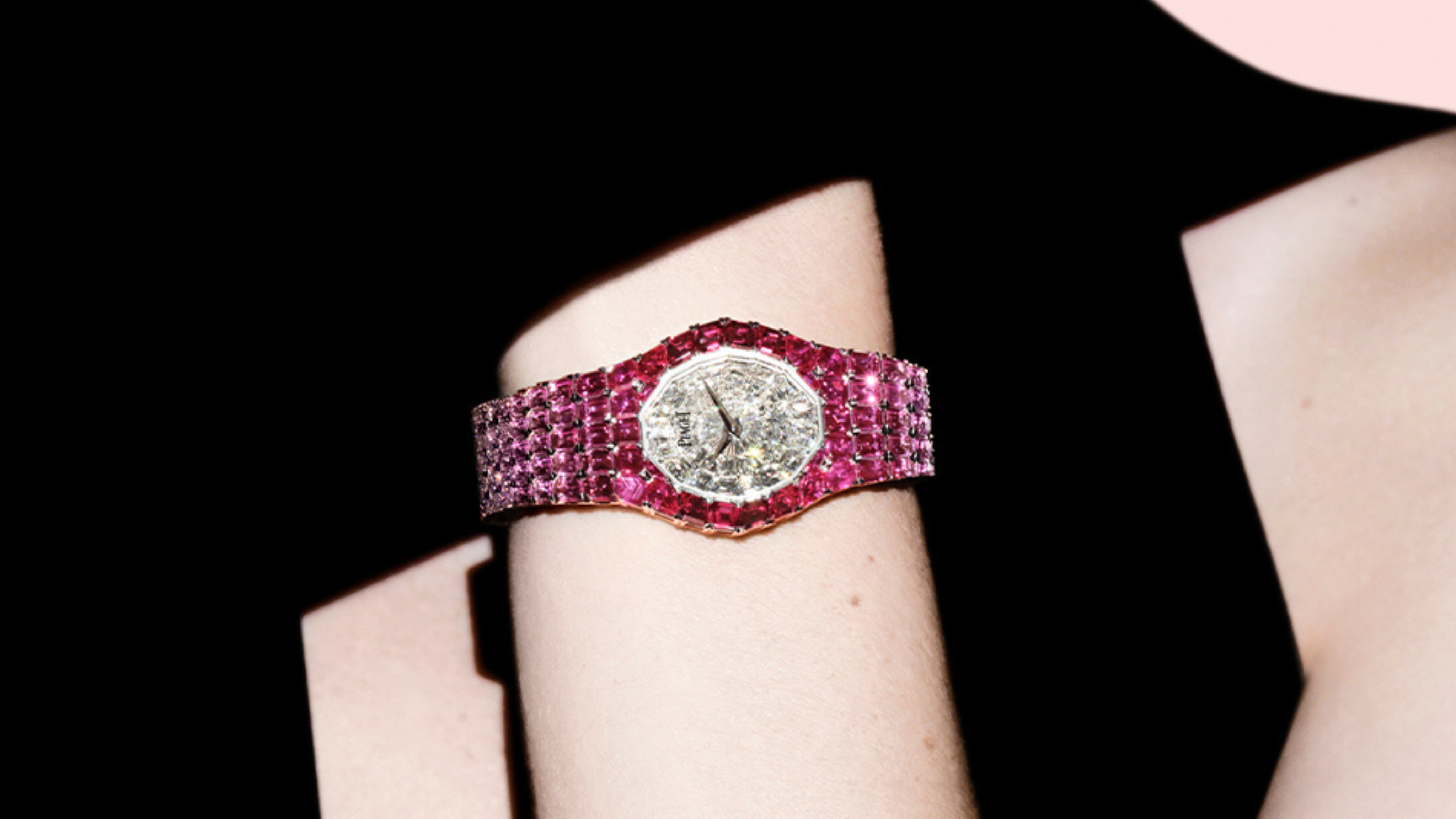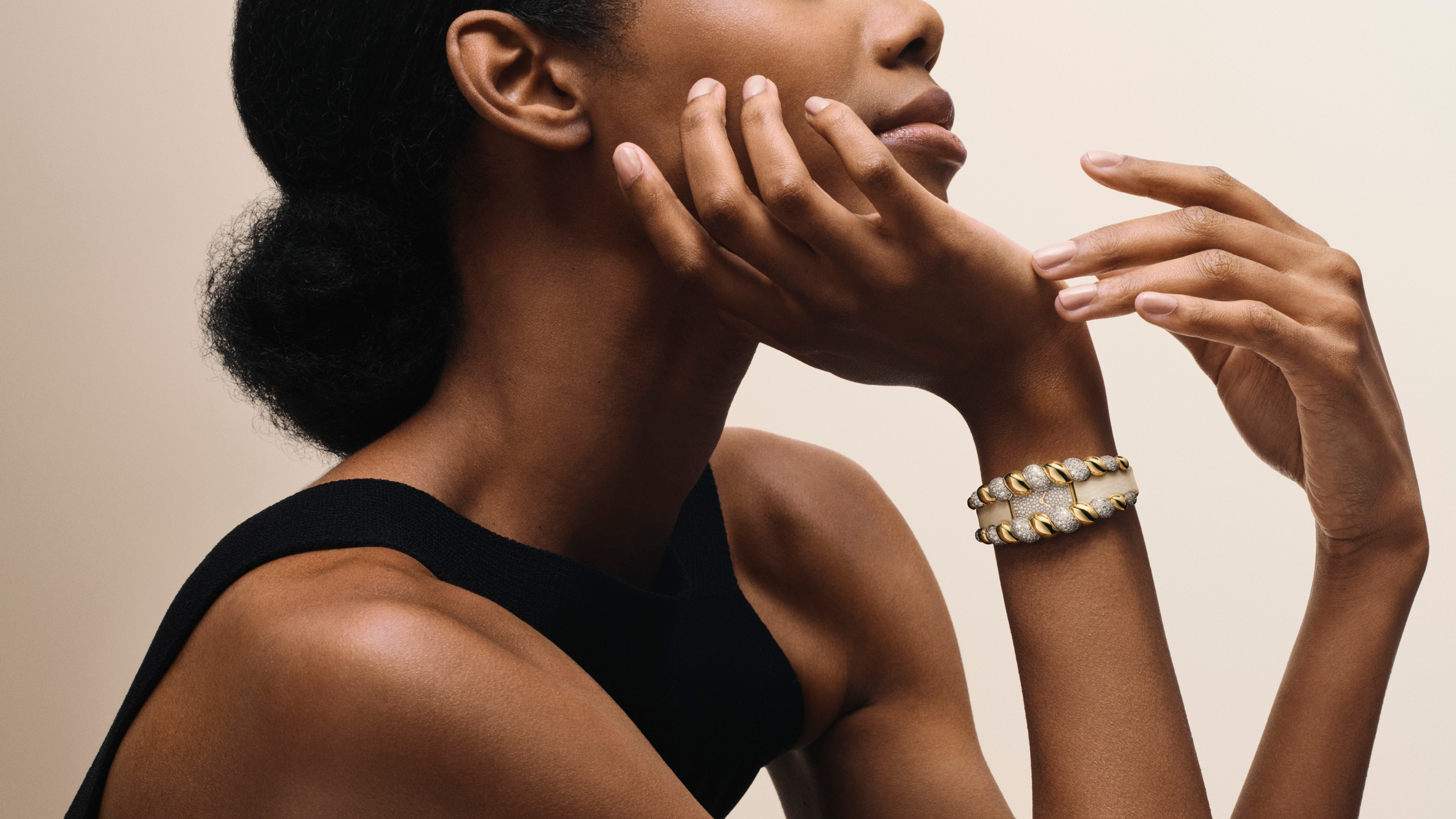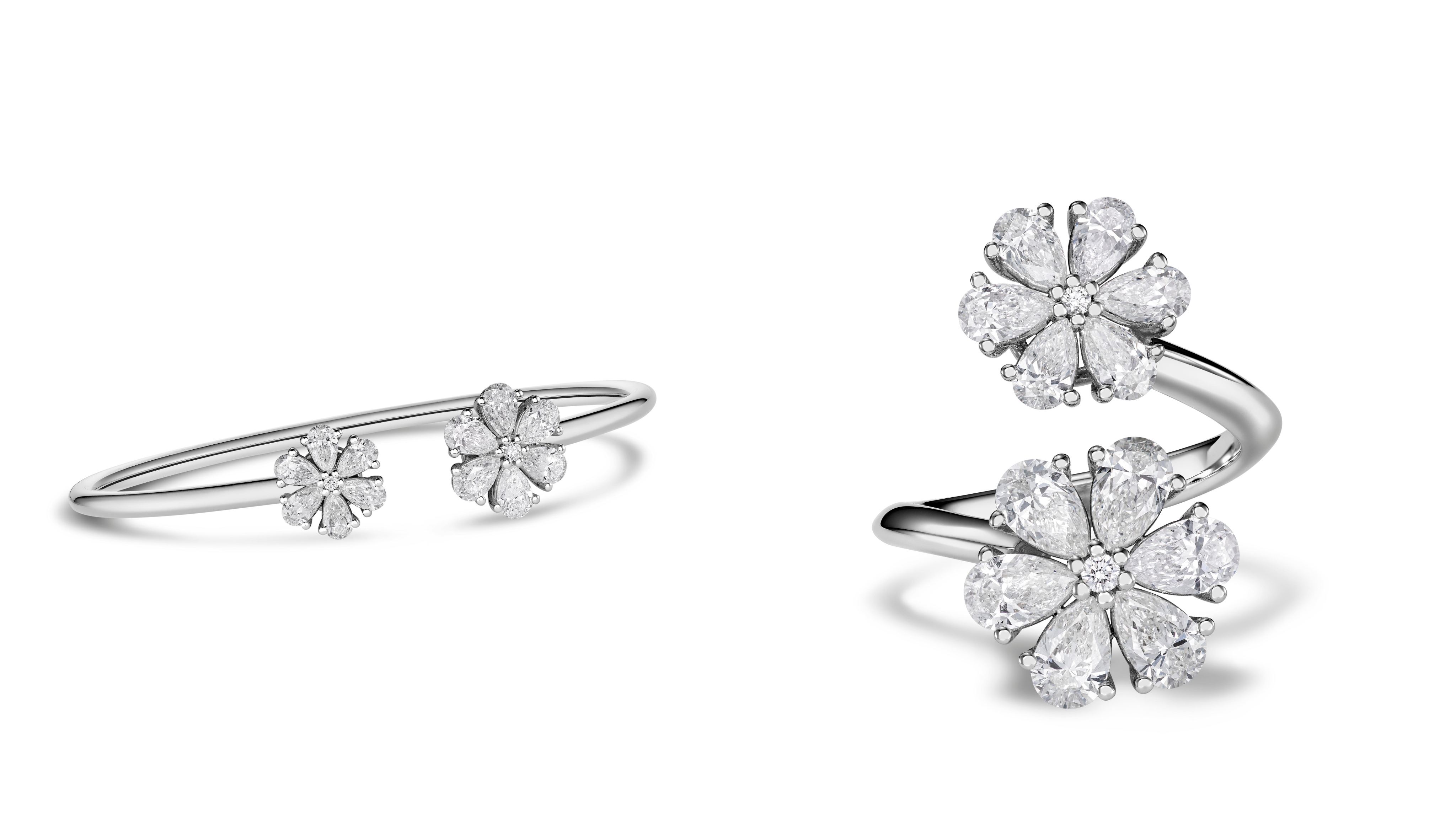The roots of Romanity run deep on the Palatine hill, a cradle of antiquity that rises up above the city, crowning the Seven Hills of Rome. To the West it meets the Velian hill, upon which Hadrian built a twin temple to the gods Venus Felix and Roma Aeterna: the perfect symmetry of AMOR and ROMA – the former the goddess of good fortune and the latter a deification of the Eternal City itself. At its completion in 141 AD, Hadrian’s was the largest temple in the ancient world. Today, its ruins form a monumental backdrop for the FENDI Couture Fall/Winter 2019-2020 show, which takes place at sunset. Framed by the cella of Venus and parading through an ephemeral Italian garden replete with topiary and reflecting pools, 54 silhouettes acknowledge Karl Lagerfeld’s 54-year tenure at the house of FENDI.
Celebrating Rome in its ageless glory, the Collection unfolds in a symphony of shifting impressions. On one hand, the rigor and tessellation of classical architecture. On the other, nature’s own systems: its roots, filaments, structures and stratum. Above all, the cinematic allure of a Roman woman.
Lifted from the pages of Raniero Gnoli’s Marmore Romana, the Collection explores the metamorphic splendour of marble – its essence as one of nature’s imperfect wonders threaded with crystalline veins and otherworldly colours. Evoking the masterful craft of opus sectile marquetry – from the mosaics of Caligula’s Nemi ships to the floors of the Domus Tiberiana – pictorial decorations are synthesized in fabric and fur, blurring the lines of materiality in the third dimension. Alluding to the serene palette of the Jugendstil, pastel shades of citrine, jade, rose quartz and chalcedony encounter mineral and earth tones flecked with gold.
Hand-picked by Silvia Venturini Fendi, archive sketches by Karl Lagerfeld inform elements of the Collection’s silhouette – defining the sweeping lines of tailoring, the ample drape of empress dresses, tucked shoulders and a graphic décolleté. In coats of extraordinary lightness, basket and floral motifs create repeating oculi in lattice leatherwork and waves of marble-painted mink, whilst meticulous artistry evolves the iconic Astuccio stripe as a fringed shearling or delicate tulle suspension. Pencil skirts, blouses and palazzo trousers in silk moiré and marbled gazar are underpinned by frosted lingerie, as diaphanous bishop-sleeve gowns grow feathered petals, grids of octagon beading and sheaves of raffia ‘wheat’. Weaving techniques return upon opulent fur Baguette bags, transparent sandals and boots, whereas framed minaudières reflect the grandeur of the opus sectile on an intimate, human scale.
During the show… the Berlin-based Italian composer Caterina Barbieri performs live, exploring the psycho-physical effects of repetition through the polyphonic and polyrhythmic potential of sequencers – drawing complex geometries in time and space.
After the show… passing beneath the Arch of Titus at the Summa Sacra Via, a banquet is served amidst the tranquil Barberini vineyards, a stone’s throw from the Temple of Heliogabalus and the olives, pomegranates, figs, roses and lemon trees of the Palatine hill.
